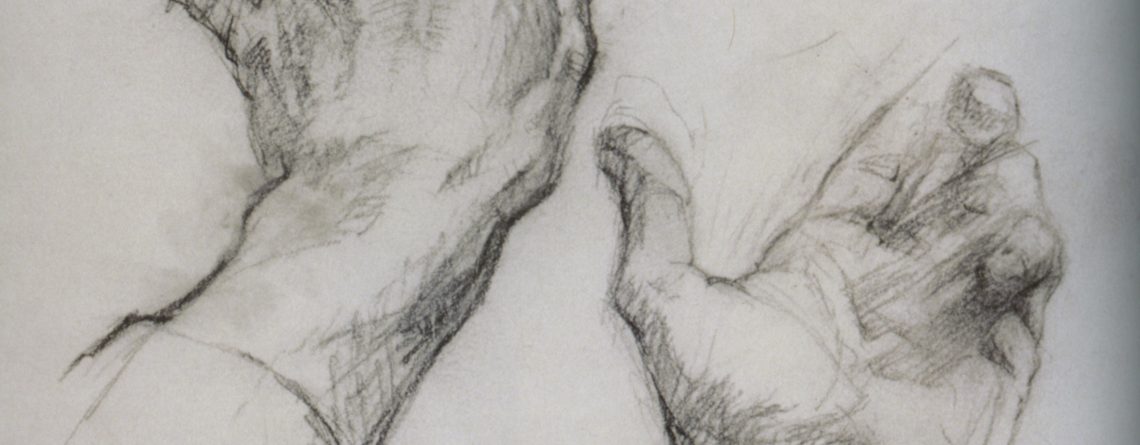How to Draw Hands
Learning to draw hands can be intimidating. Hands are one of the most complex forms in the human body, but luckily you have a ready and willing model: your own hand!

Some artists avoid drawing and painting hands because they feel overwhelmed by the different forms and the difficulty presented by the fingers. This won’t make the problem go away. Let’s face it – no one is fooled by an artist putting a model’s hand in a pocket to avoid drawing (or painting) it.
Stacy Kamin admits, “I was one of those artists. But luckily, Sherrie McGraw taught me to look at the hand in a simple way. First, she had me look for the planes of the hands and then look for simple shapes. She broke the structure of hands down for me so that I wasn’t seeing a hand anymore, but rather planes, shapes, angles and gesture.”

It is important to observe plane changes in hands. If you see the fingers as belonging to a plane that extends across the fingers instead of seeing them individually, your hands will have more structure and will be more convincing. Seeing planes will help you solve this complex form more simply.
Seeing Planes in Hands
First, determine the main gesture of the hand so your drawing will have life and movement. The gesture of the hand follows the arm through the wrist and to the index finger. In essence, eliminate the thumb. See the gesture of the arm as it extends into the index finger, then attach the thumb onto that.
Next, note the fleshy part of the hand on the palm side of the thumb. We call this the thenar. The fleshy part of the little finger is called the hypothenar. These are key parts of the anatomy of a hand. Capture these significant forms in order to make a hand look like a hand.
Even though fingers seem tubular, look more closely. A finger consists of four flat planes – a top, two sides and a bottom. When drawing a finger, the tendency is to make it an amorphous, sausage-like form, which doesn’t show its true structure. To avoid this, look across the fingers to begin to see that each digit belongs to an imaginary plane that traverses the separated fingers. Seeing fingers as sharing planes will allow you to draw them structurally. When you see across the fingers (rather than being seduced by their length), you begin to understand the trick in deciphering the forms in the hand. Note the light and shadow pattern on the finger. Is it in shadow, darker light, or light? The answer to this question will tell you which plane the finger belongs to and will give the hands a more solid, structural feel.
Before you know it, you will be drawing hands whenever you have a spare moment.
Have fun learning to draw hands!



Leave a Reply
You must be logged in to post a comment.